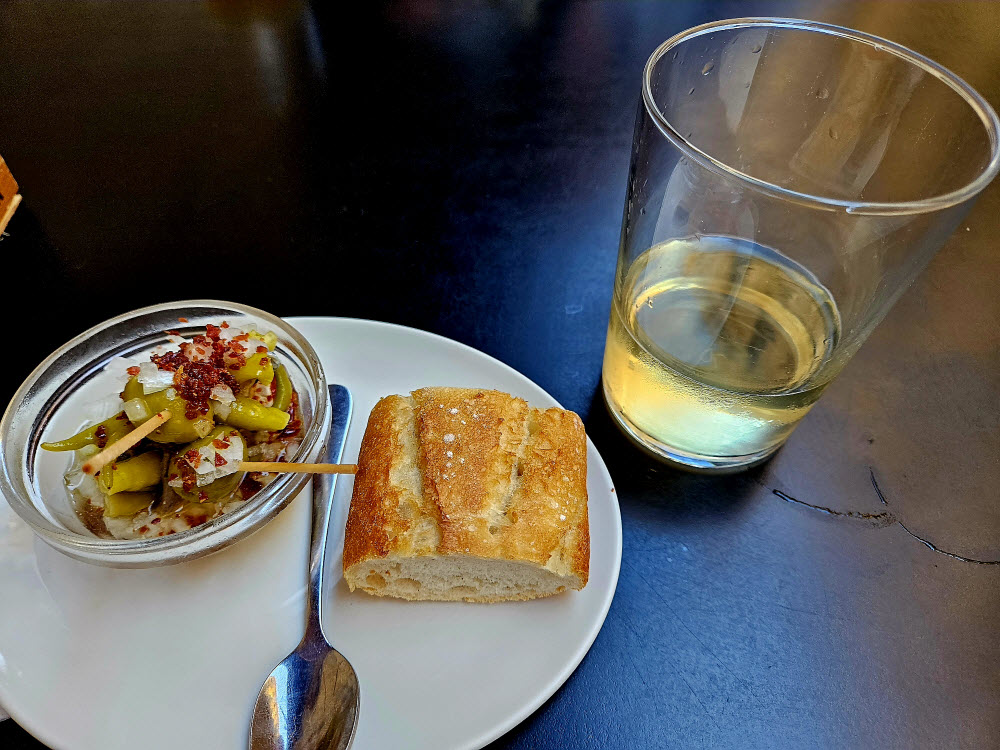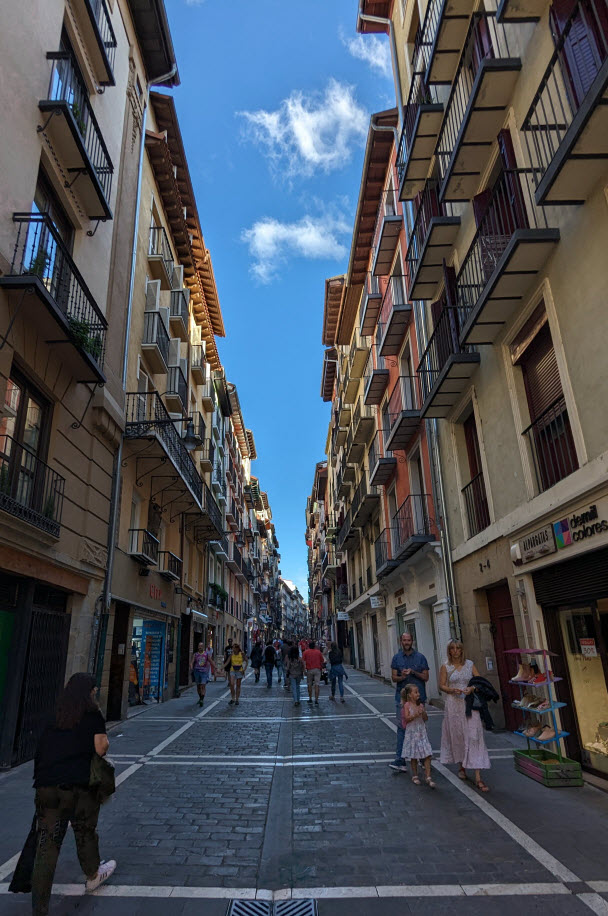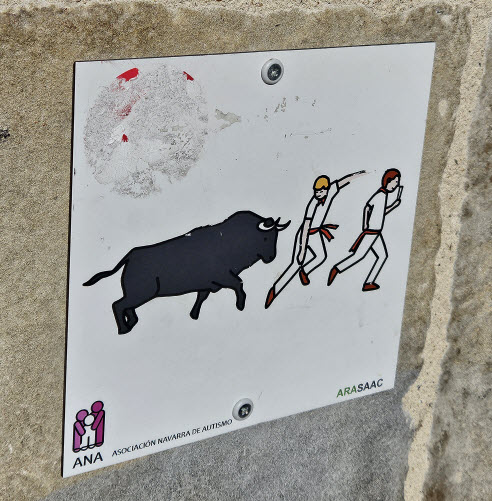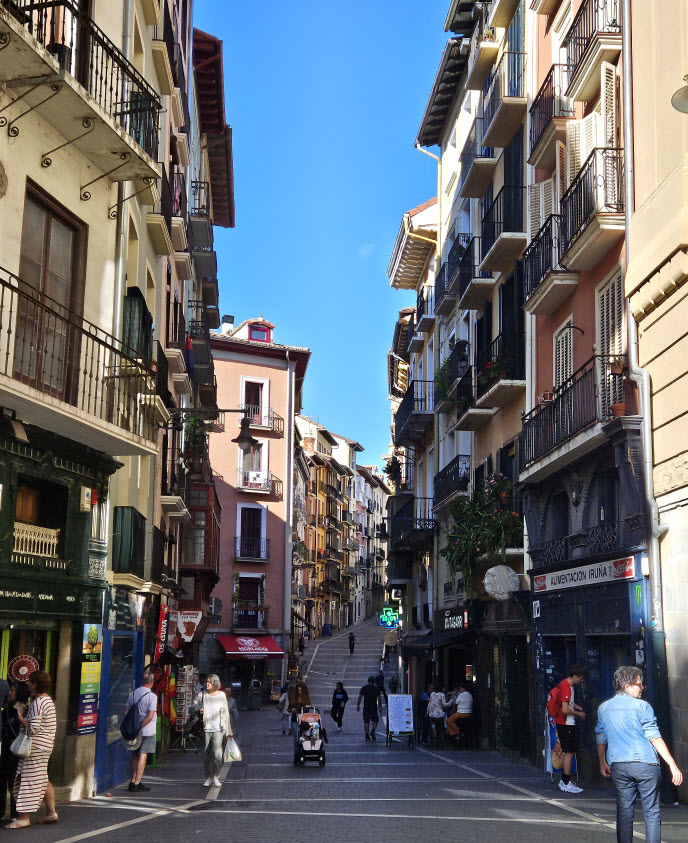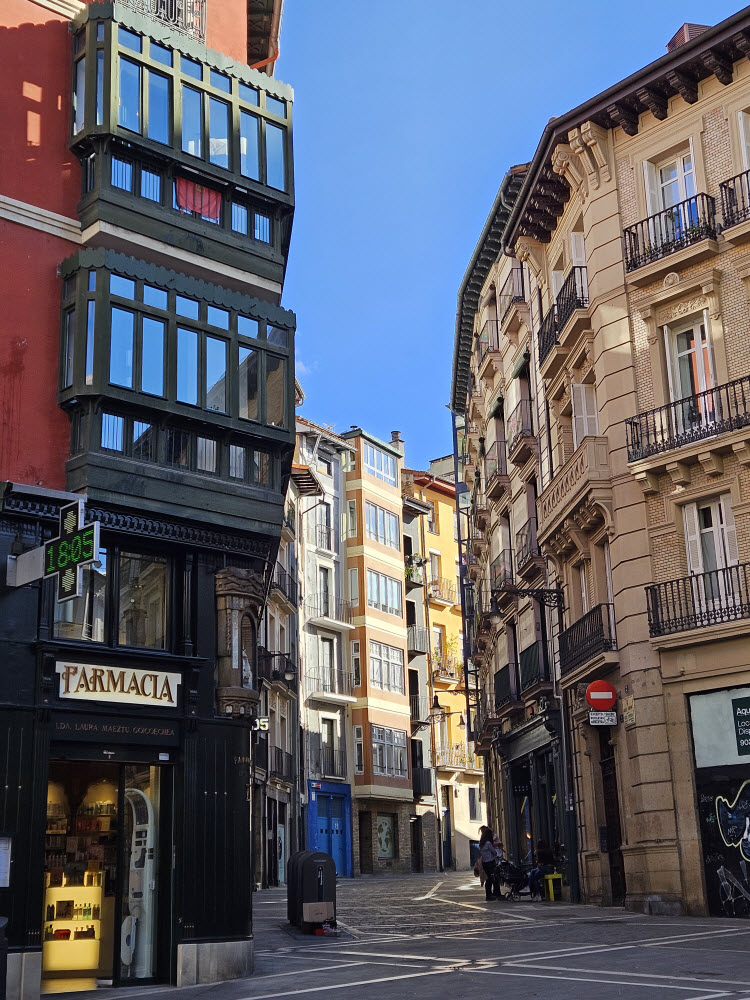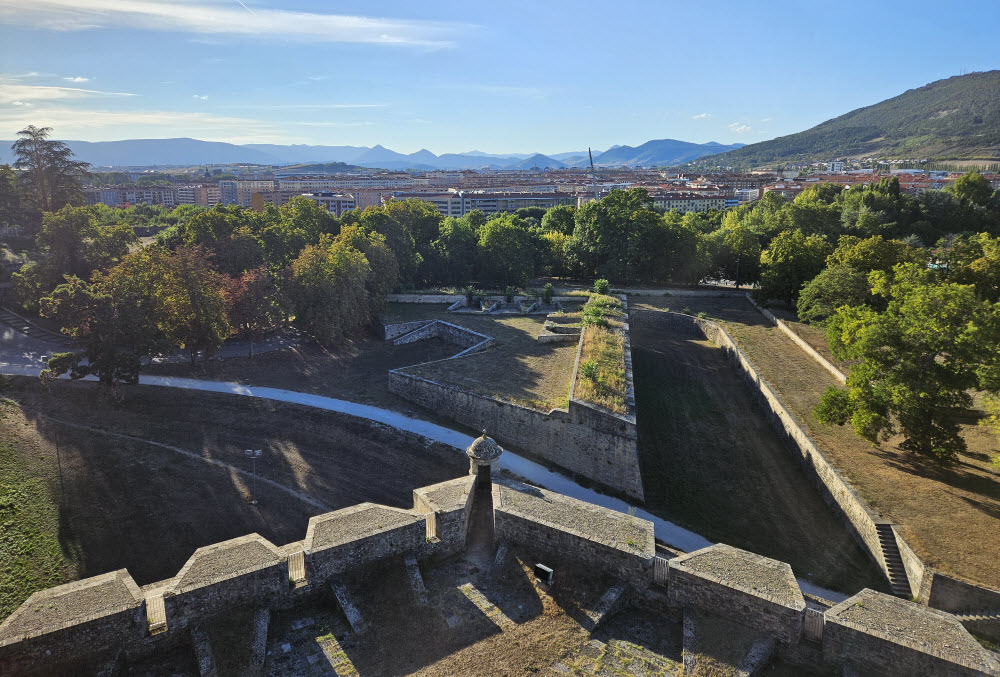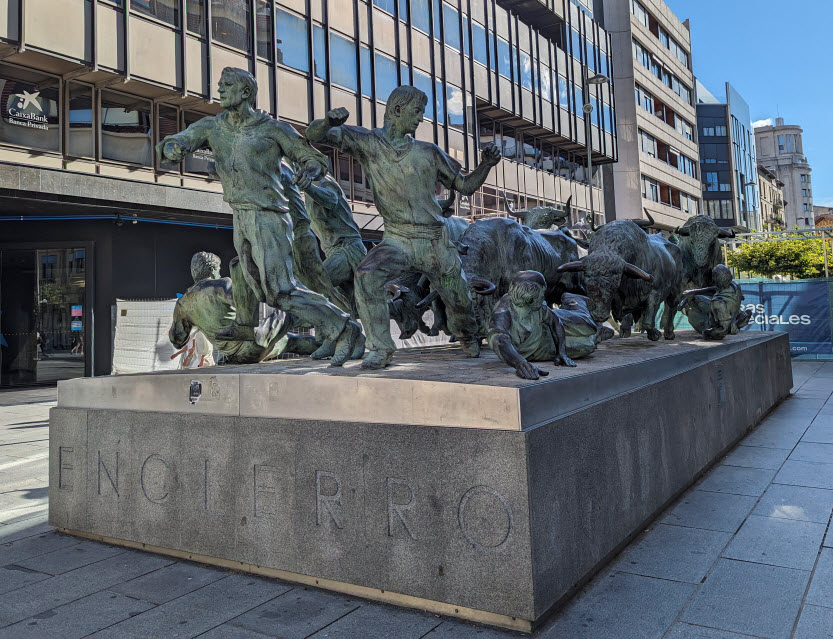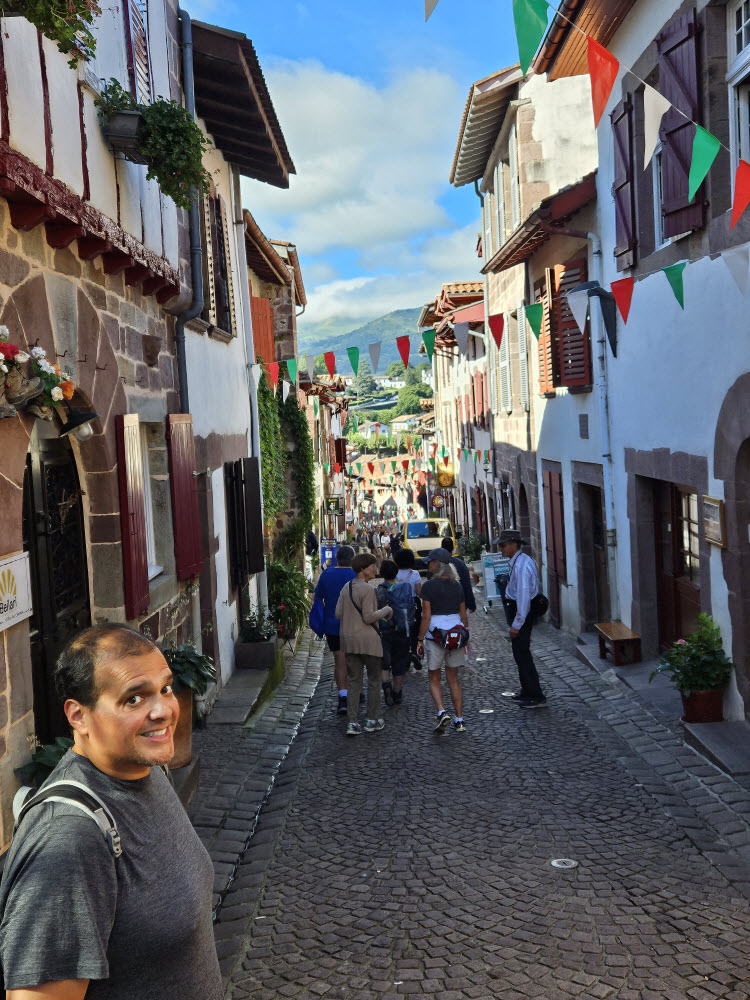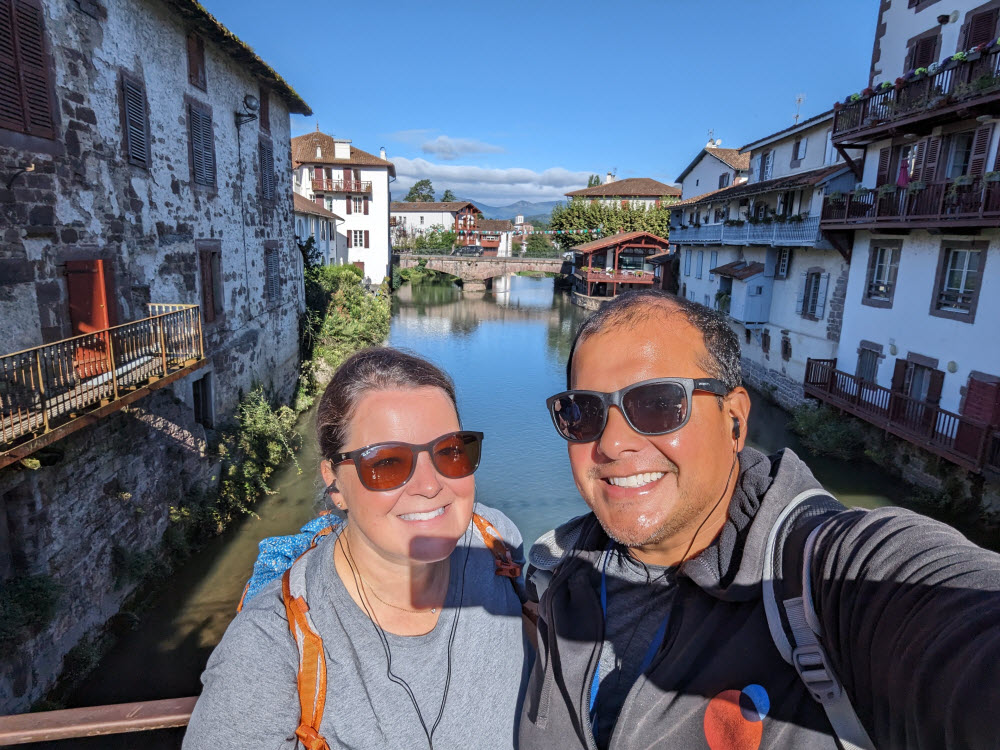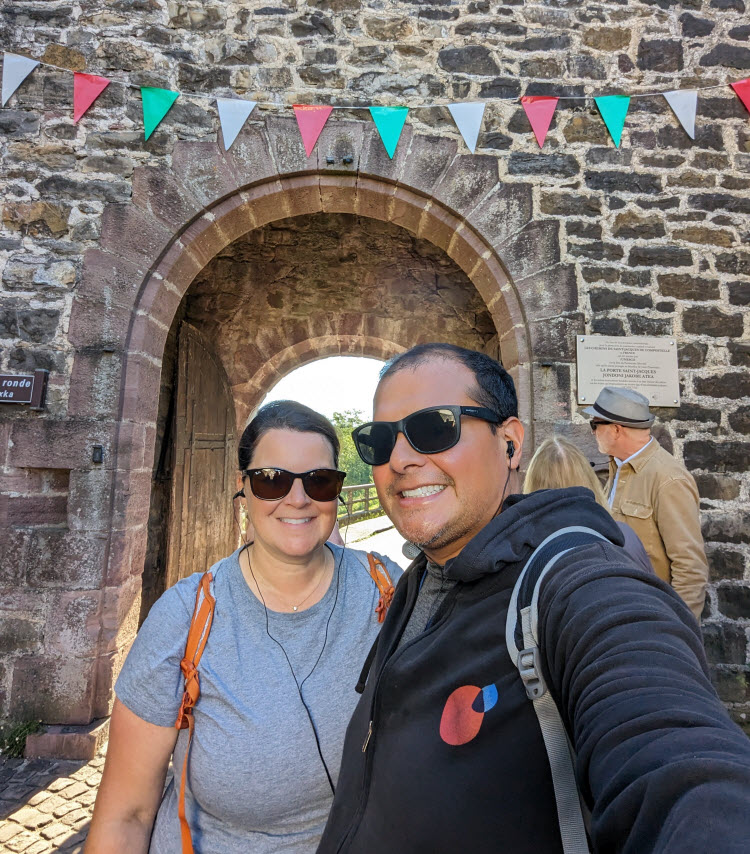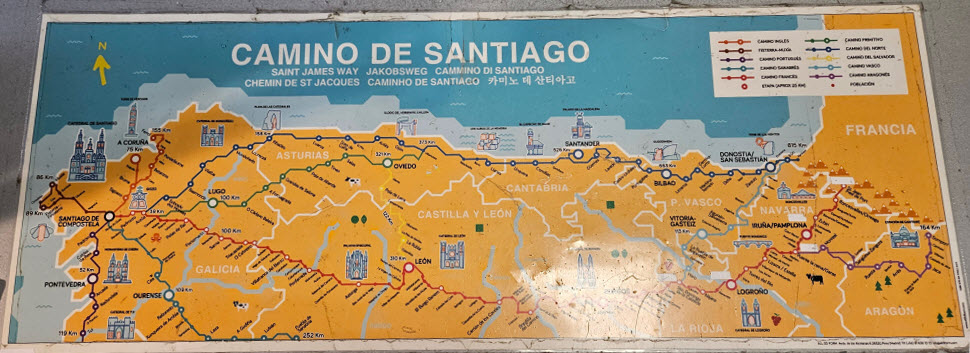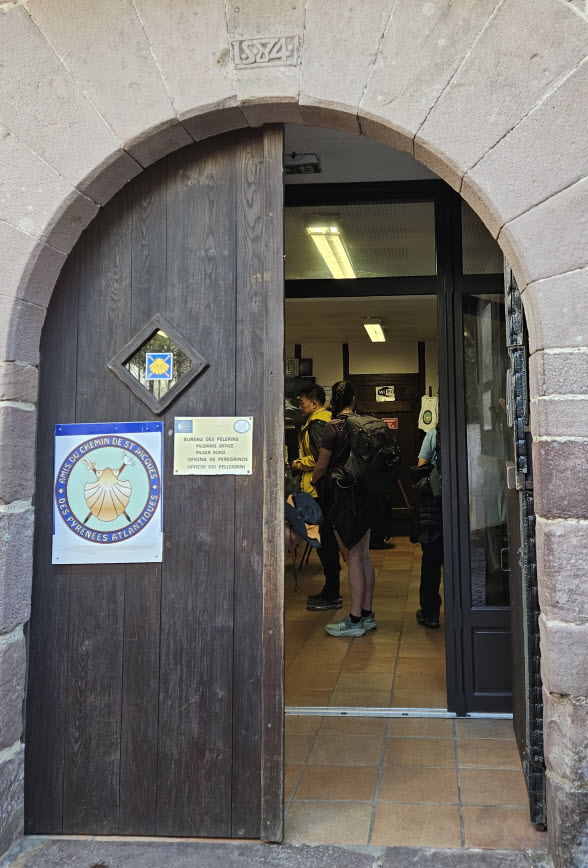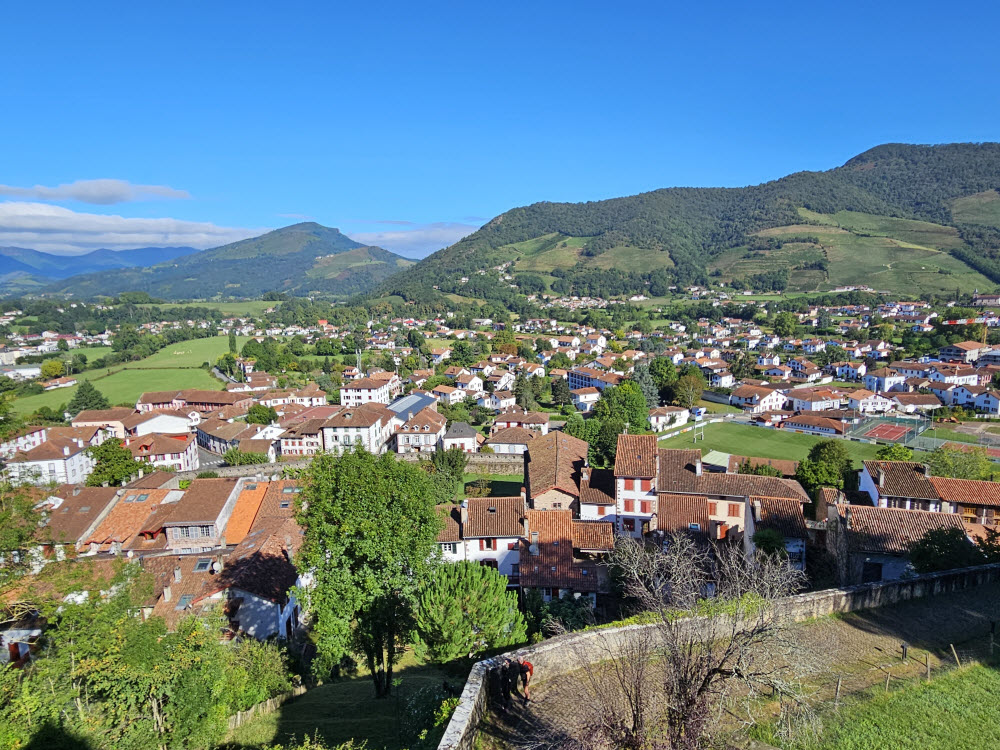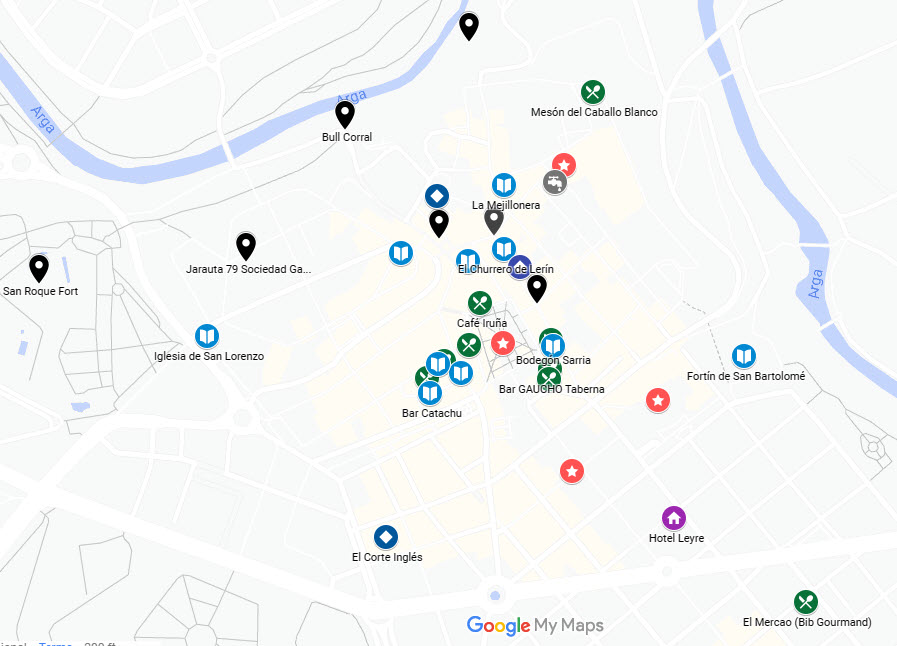Visiting Saint-Jean-Pied-de-Port, walking el Camino de Santiago, and ending in Pamplona
The third day dawned with promises of adventure as we bid adieu to Bayonne heading to Saint-Jean-Pied-de-Port. This place is a kick-off point for pilgrims walking el Camino de Santiago. After a brief hike within el Camino de Santiago, we stopped for lunch in Roncesvalles and finished the day eating tapas in Pamplona.
Day 3 was our first introduction to the bus we would be taking through the Basque countryside. As mentioned in our pre-tour post, this tour contains short bus times. Meaning more time exploring on foot than hours on a bus trip.
Saint-Jean-Pied-de-Port
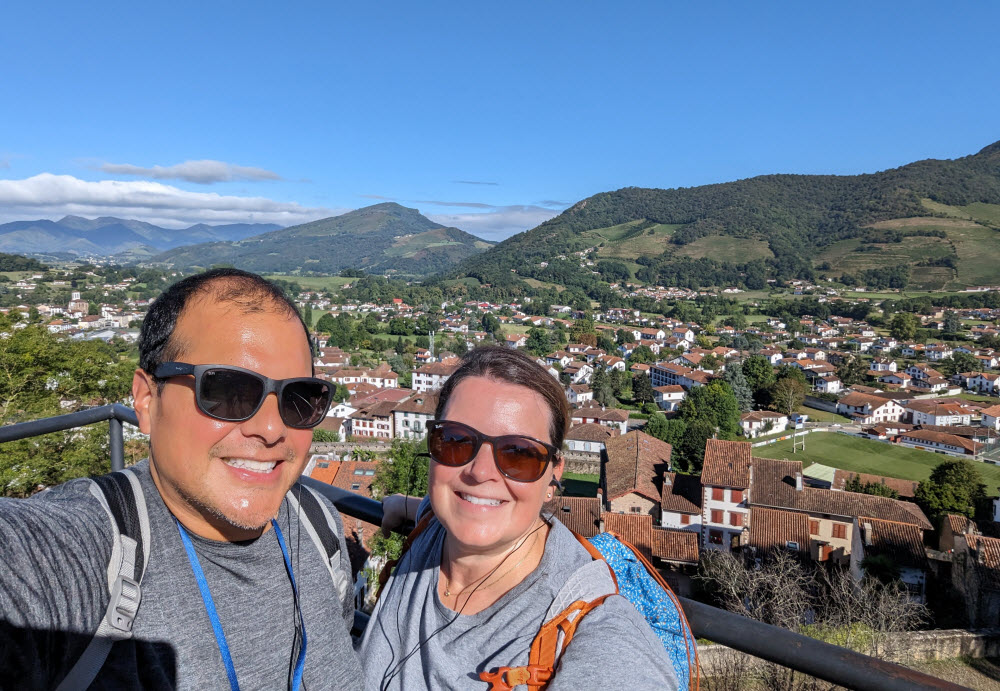
This quaint town is a starting point for el Camino de Santiago, crossing from France into Spain. Basque pride is on full display here with banners of red, white, and green flags fly high across the streets. The Basque symbol, four tear drops woven together to look like a cross, are etched along the road and throughout the towns. Images of seashells are also abound throughout Basque Country. The scallop shell is the iconic symbol of el Camino de Sanitago, metaphorically each line represents the different routes all converging together to a single place, Santiago de Compestela.
Ascending to the highest point of Saint-Jean-Pied-de-Port, we were rewarded with panoramic vistas across the Basque country. We pass two Camino gates and explored an official Camino office, where pilgrims meet up, passports are stamped, and the journey kicks off.
Taking a stroll on el Camino de Santiago
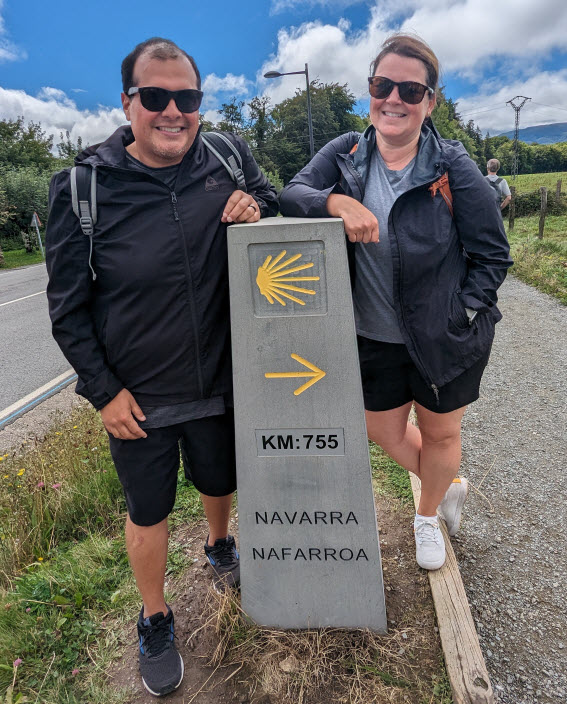
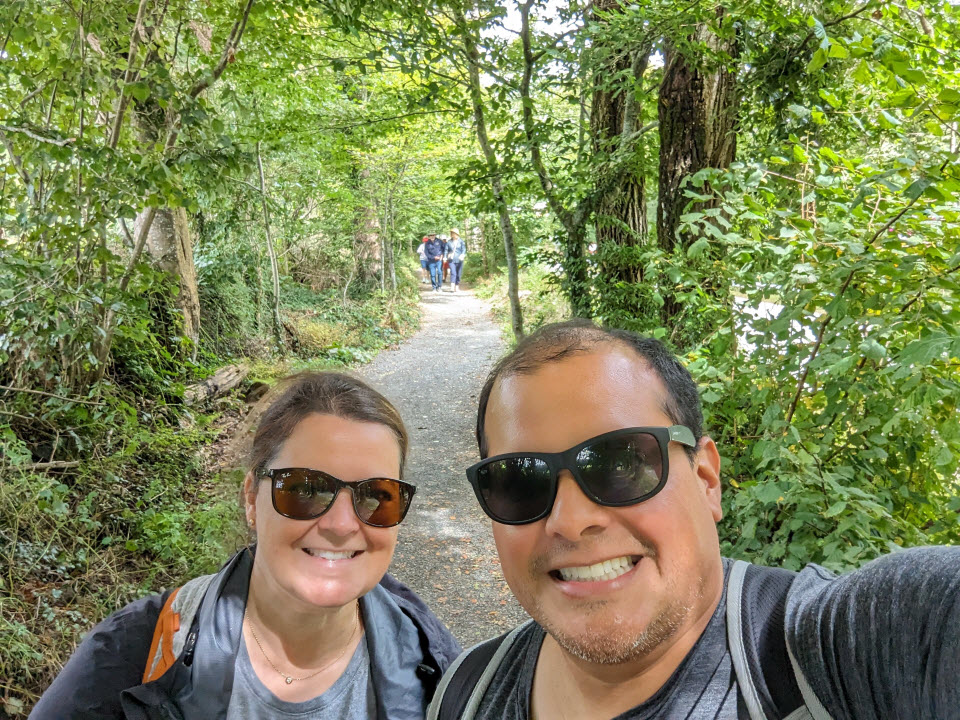
Definitely a highlight of the trip, being able to boast of walking el Camino de Santiago. Many people take months, or even years to complete journey. We didn’t have that amount of time, nor the equipment to do so but, we were able to walk a portion of el Camino – thus making us pilgrims who have started the trek. Beginning at Roncesvalles, the group embarked on a two mile walk into the town of Burguete. Trees shaded the gravel path portion of el Camino we took, blocking the sun from burning our skin.
Sights along the section we walked included street art and a field full of monuments of the Lauburu, the traditional symbol of Basque Country. Yellow arrows and scallop shells mark the Camino trail for pilgrims to follow. However, despite the well-marked path, we lost our way! With no cell service, we couldn’t rely on google maps to guide us. Luckily, this was a quick and easy walk and we quickly stumbled upon the rest of our tour group at our end point, Hotel Loizu for lunch.
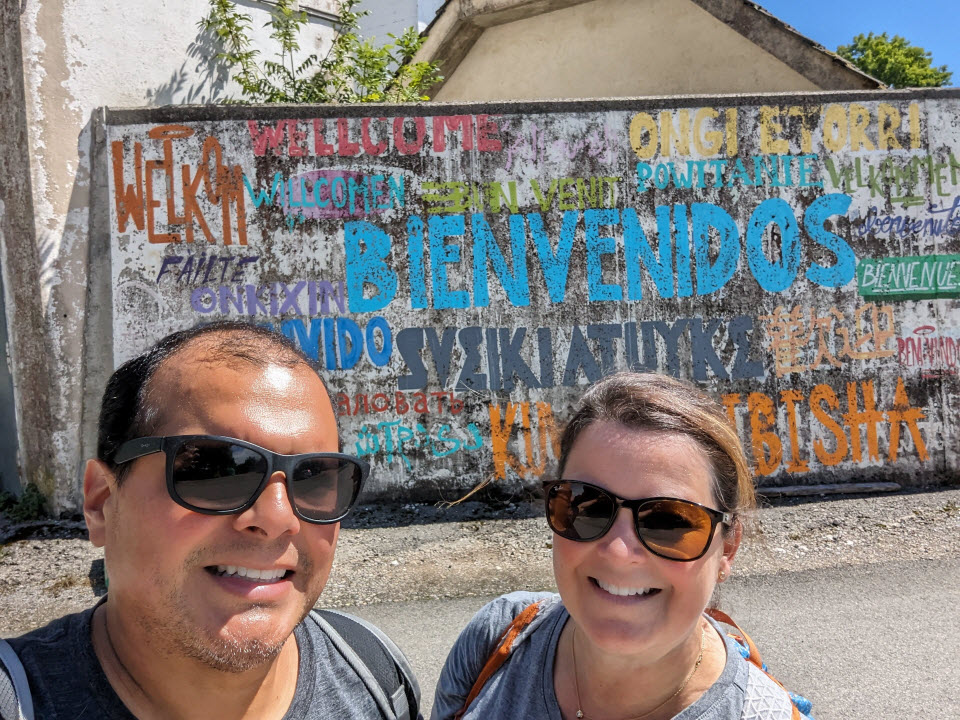
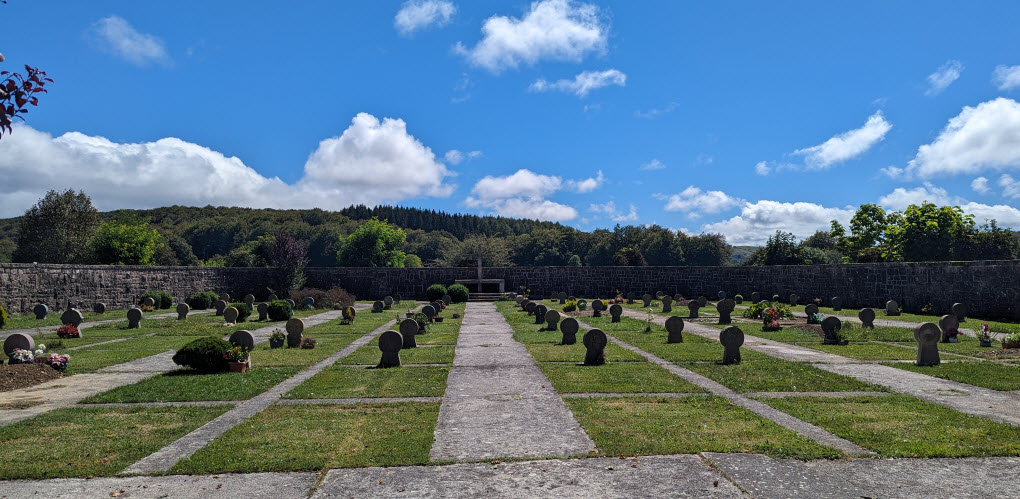

Heading into Pamplona
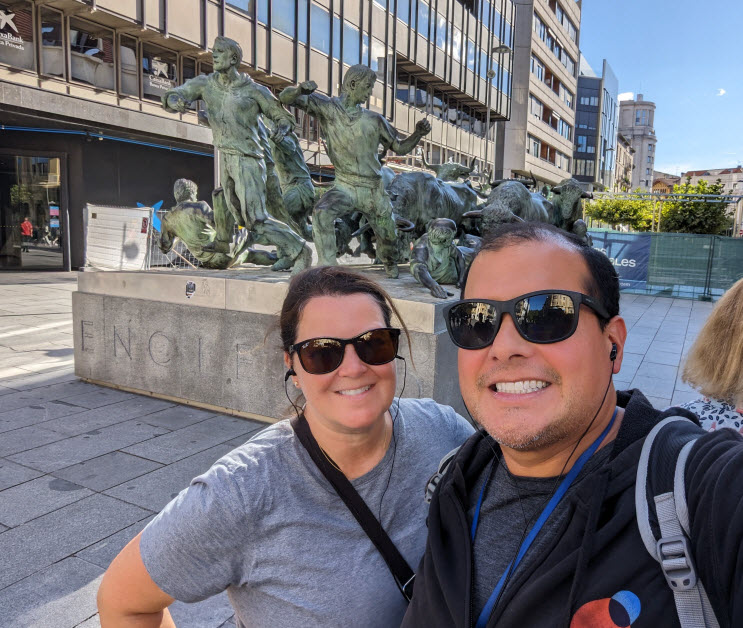
After a hearty lunch and lots of wine, it was time to siesta on the bus as we transcended into Pamplona, the capital of Navarra. Historically, the running of the bulls made Pamplona a destination for adventure seekers. Ernest Hemmingway made this city and the event popular in his book, The Sun Also Rises. We arrived midafternoon and checked into Hotel Sercotel Leyre. Todd gave us a quick orientation walking tour of the city, including the path where the running of bulls takes place. We passed the stadium where the run ends and the bull fighting begins.
The tour portion concluded with introductions to pintxos, Euskera for tapas. These are small bites of food given or purchased while drinking, typically to hold you over until dinner. Todd took us to Bar Gaucho for the formal introduction to ordering pintxos in Euskera. After a lovely Txakoli, a dry white wine poured at a 90-degree angle from above shoulder height, and La Gilda, the most iconic pintxos made of anchovy, spicy pepper, olive, and olive oil we were practically Basque locals. We had the remaining evening to explore Pamplona on our own. We walked along the walls that offer the city protection, offering views again of the beautiful Basque Country.
